Don’t take it personally. Seriously. For the most part majority of people don’t really understand the number of things you are juggling.
It can be easy to feel flustered. Heck even maybe have a nervous breakdown. It effects everyone differently.

Your responsibility delivering a product can mean that you are in conjunction with many other teams. That means you also deal with many other people. And when you are dealing with multiple people that results in even more diverse personalities. The reality is that not everyone is going to collaborate well.
But you’re the product manager right? You’re the bee’s knee’s got the whole product wrapped in your fingertips like a pseudo god in your own universe. Ahh it feels great. And by all means it does, until you realize the amount of work associated to keeping things moving and maybe at times your sanity.
Doesn’t have to always be like that though. Every product manager deals with deadlines and prioritization differently. From observing some Product managers I have noticed some trends though that have been able to quiet the winds within the storm.
First off, it goes without saying that being cognizant with your work is definitely a must. By this I mean tracking and having a general sense of awareness of all the current, To-do and future planning phases of what you are doing. Easier said than done. I know for a fact, since that alone can evolve into a beast.
But there are ways to combat this. I’m assuming in this field that every product manager is being asked a million questions to how something works to what was on the agenda for something that was a couple of months ago. Point is that either way you are going to be bombarded with many questions that you need to have some handle on.
Methods to handle vary from person to person. I have seen a plethora of options from the standard note book (I tried this approach, but soon realized that I couldn’t comprehend my own handwriting at times) to using digital agendas with all sorts of features. Needless to say, all these solutions work so it doesn’t matter which one you choose only that you remain invested in it to see the benefits. Personally I like to use a digital Kanban board tool called Trello. I like Trello because of the simplicity and colourful interface that it has — makes keeping track more exciting. However it’s the easy functionality that won me over, because it works just as how a physical Kanban board would work.
For those that don’t know what a Kanban board is, essentially it is a board that is broken down into 3 columns of ‘To do’, ‘In Progress’ and ‘Complete’ in its simplest form. Tasks start out in the ‘To do’ section written out a sticky note, that then moves into the other two columns. In the end the Kanban board is great at capturing the organization and progression of tasks.
Going back to organization, one of the things I tend to keep track of is a log of tasks in which I have completed as well as in progress. The reason why is because having a log or a form of diary of things in motion significantly helps when people ask for a status update. Things I include and also recommend are summarized meeting notes, Key players involved in the projects, due dates and call to actions. How you organize them isn’t really an issue, but rather how easily you can access them on the go as a point of reference. One of the features of Trello that I like personally is the task checklists that have observable percentage complete markers on them. It always feels great to check off something on the Todo list.
Ultimately though when it comes to organization, I think communication is key. A lot of information is being transferred all over the place and while it is neat to have a log of events, you still need to make sure stakeholders and people in the organization are aligned. Communication is a big topic in itself, so having tools like a log list or diary of work events increases your ability to convey competence within the team.
The other ground breaking technique that I have seen be used is…are you ready for this..? Getting all the people you need to talk to in a room. Mind opened.

No seriously, the amount of time and valuable energy saved in having all your meetings condensed into a larger more conversational meeting is tremendous. Get straight to the point of the meeting and respect everyone’s input on the matter and you will guaranteed come to quicker more effective solutions. The reason why is obvious (wasn’t as obvious to me because I only recently started doing this tbh…) because end of the day, face to face communication is far more detailed and easier to understand to get stuff done. Issue arises that someone thought of? Not a problem, we can figure out the solution right here in the room also. We just saved 2 hours of communication silence to come to a solution. Whit boarding sessions, graphic mock-ups, status updates all can be leveraged to have conversational type meetings where everyone is engaged.
That being said, I don’t recommend a large party meeting every time something comes up! That will become ineffective and cumbersome overtime. Use your discretion in obviously 🙂
Lastly I find when hosting these meetings it’s beneficial to be more of a facilitator of the conversation and allow the people in the room to naturally come to solutions while I prefer to sit back and take notes. Being the neutral guy in the room with an open mind can lead to interesting angles that you may have not have realized at the time which would allow for some cool breakthroughs.
So basically, keep organized of all the projects and moving parts required in making your product a reality and make communication a staple action in your work.
Originally Published Dec 2018 from My Personal Blog
